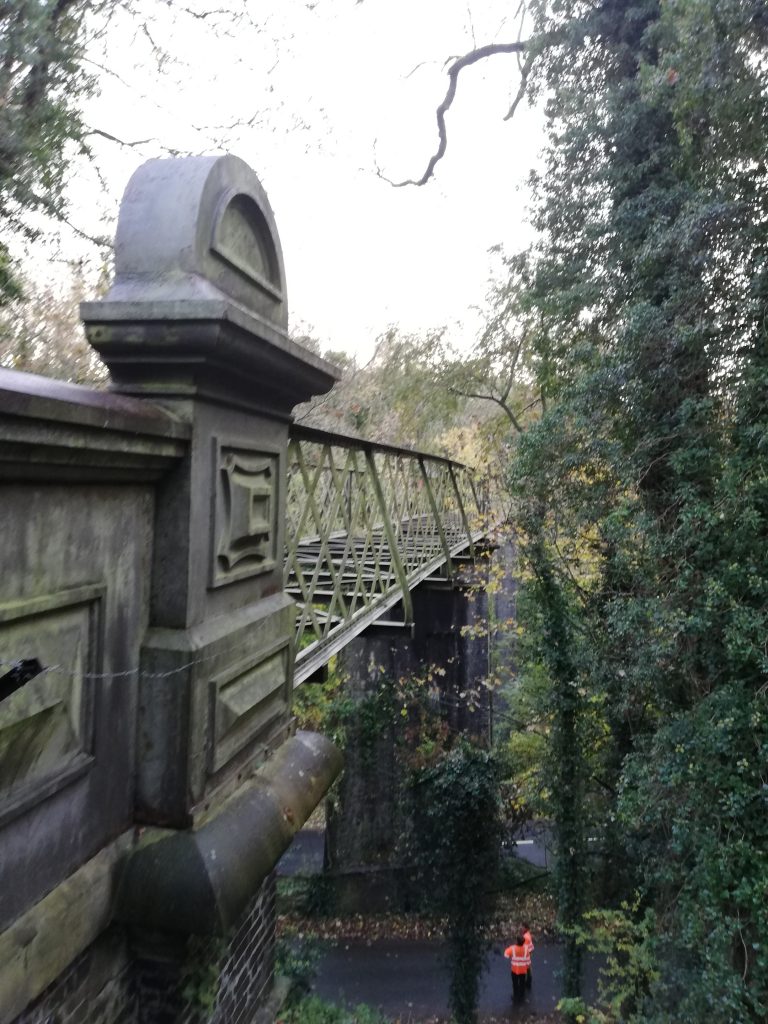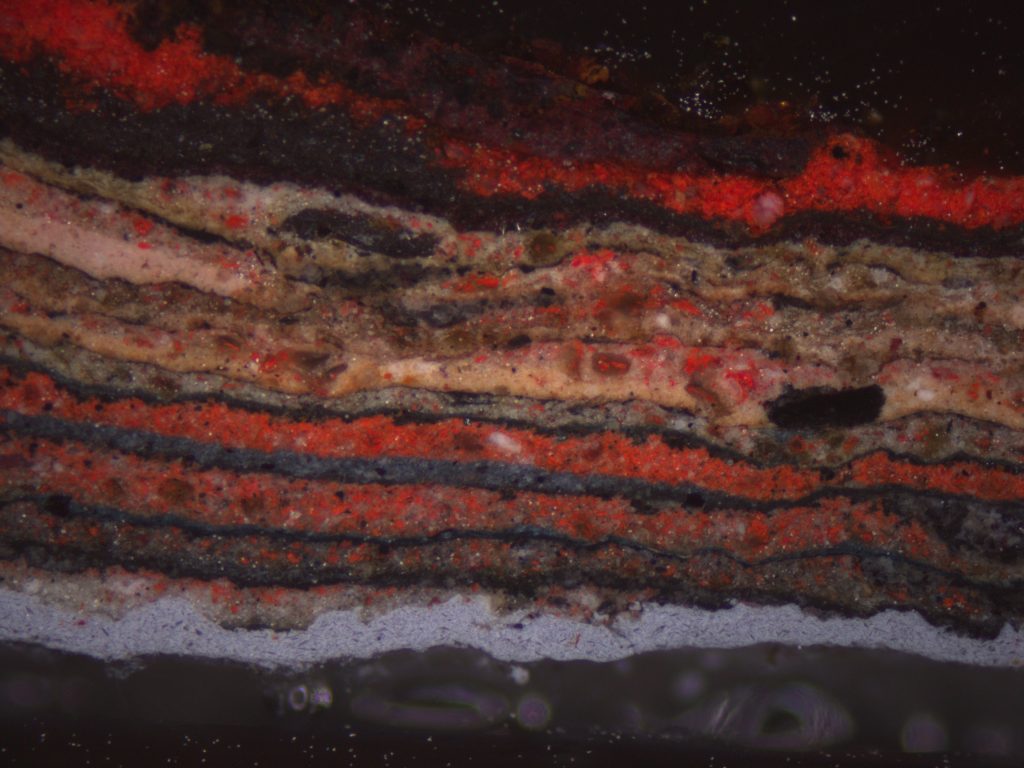The Lee Dingle Bridge – Telford

History
The Lee Dingle Bridge is a Grade II Listed. It was built c.1859 to span the valley and railway line (now Coalport Road) and transport coal on a tramway from the Meadow Pit Colliery on the west side to the Blists Hill Ironworks on the east – now Blists Hill Museum. By the early 20th century, the bridge was no longer in use for its original purpose but continued to be used by local people as a convenient crossing point. Public access was finally blocked off in the 1960s and the rails on the bridge were lifted. The eastern brick pier was rebuilt, and the eastern end of the bridge was sandblasted to remove the existing paint before being redecorated. The distinctive iron lattice work side panels and cast-iron approaches on both sides have been retained.
Research Brief
A full structural inspection of the bridge was carried out in October 2020 which involved the use of a cherry picker. This provided an opportunity to carry out Architectural Paint Research (APR) to examine the existing paintwork and determine the decorative history of the bridge. During the course of the examination paint samples were removed for further examination in cross-section under high magnification.

Conclusions
It is suggested that the 1st Decoration in a Light Cream oil paint was intended to imitate a Light Stone colour. The original intention was perhaps to suggest the imposing cast iron piers and panels were made of stone. This decoration was repeated three times with a slight mismatching of the discoloured paint work. At some later date it was decided to paint the bridge in a Dark Blue/Green oil paint applied over Red Lead undercoats. This scheme was repeated four times. It would have been visible until c.1960 when the bridge was paint in a Grey Micaceous Iron Oxide Paint.
